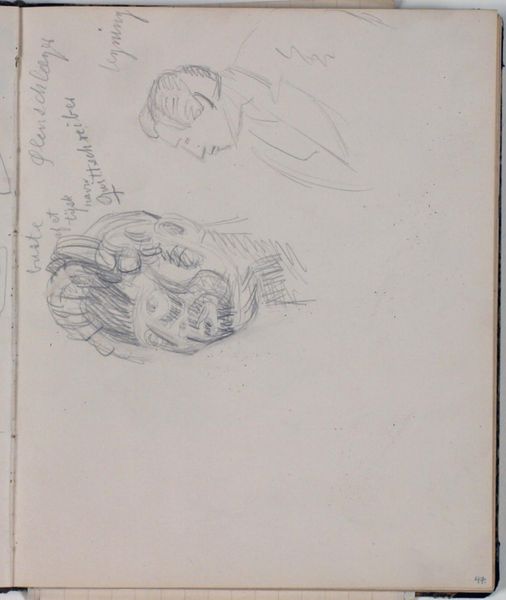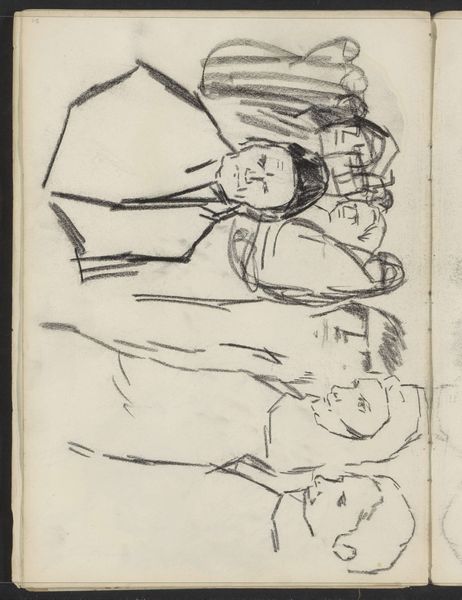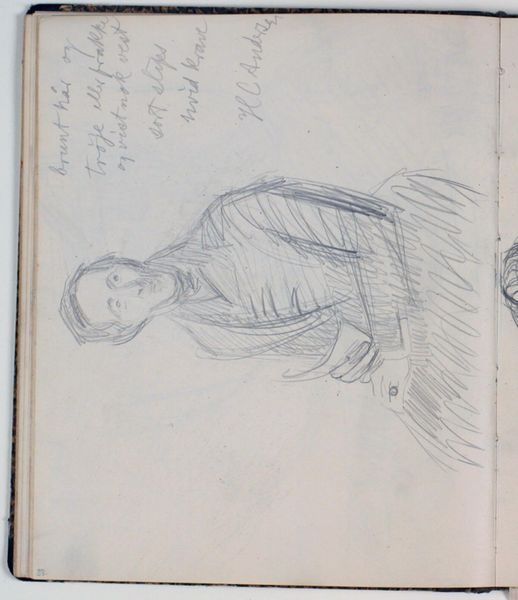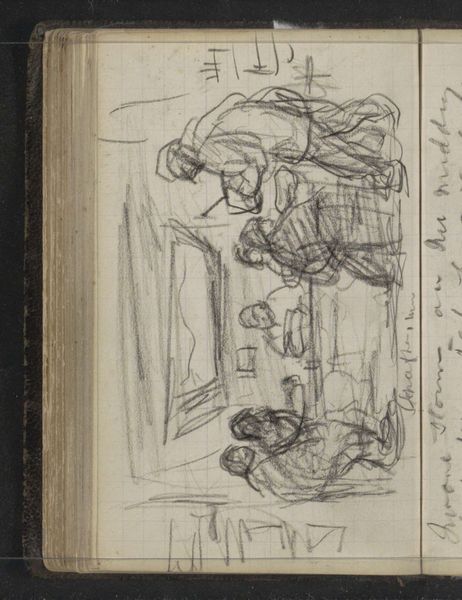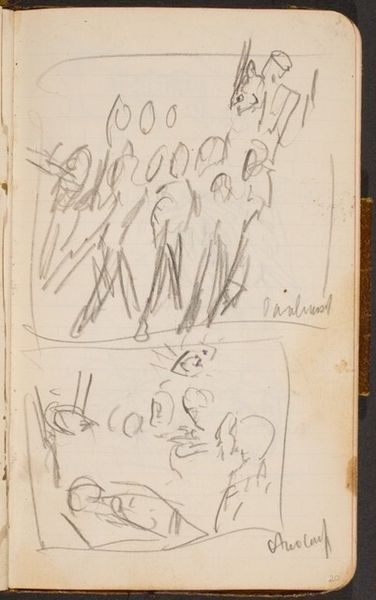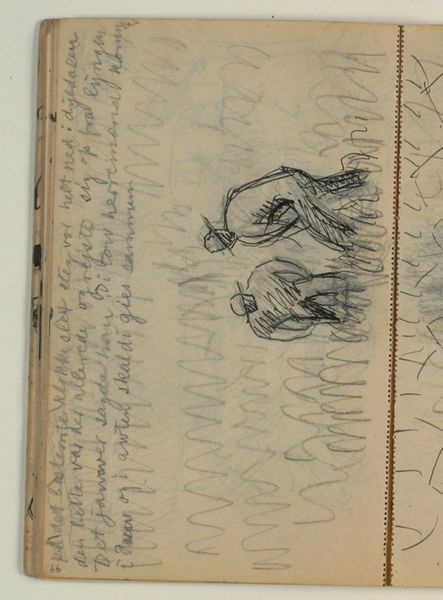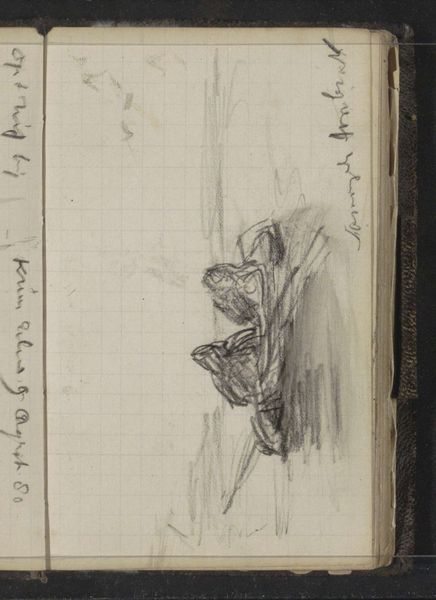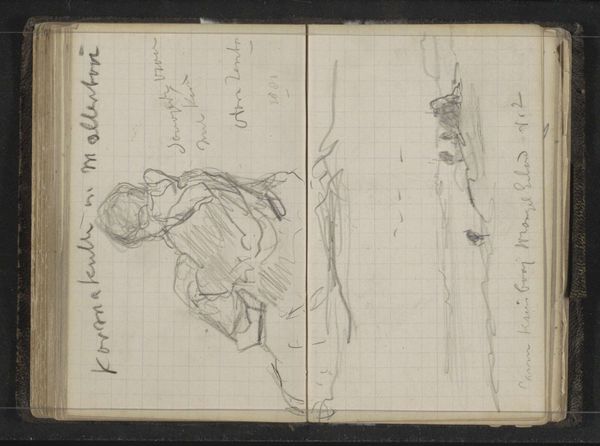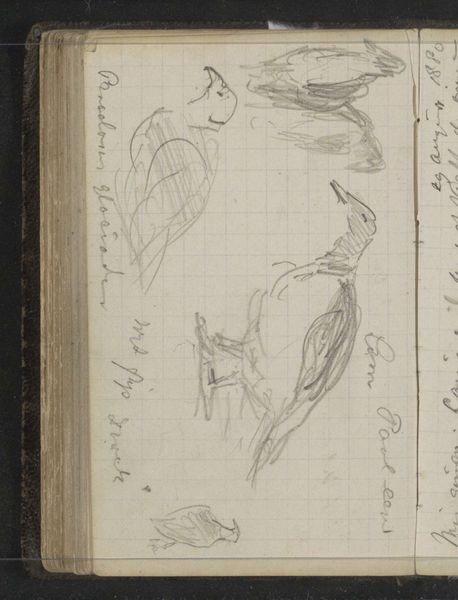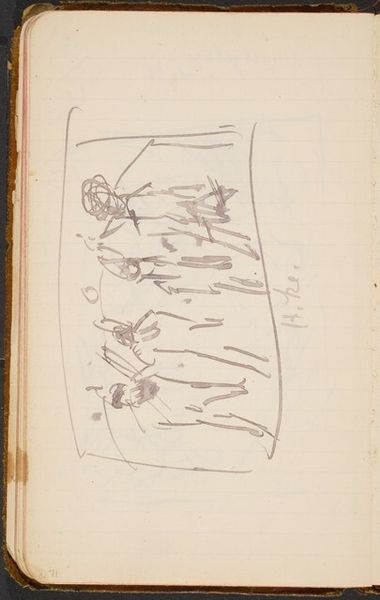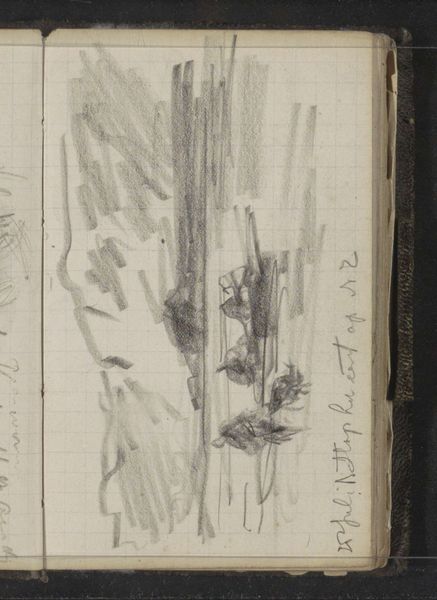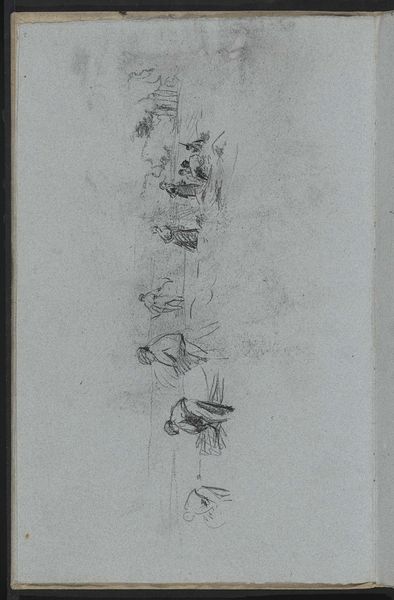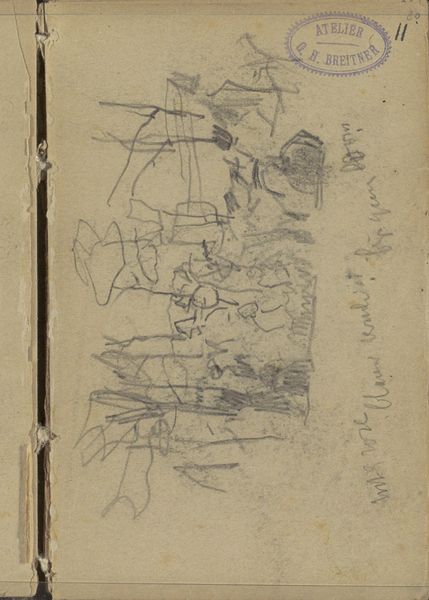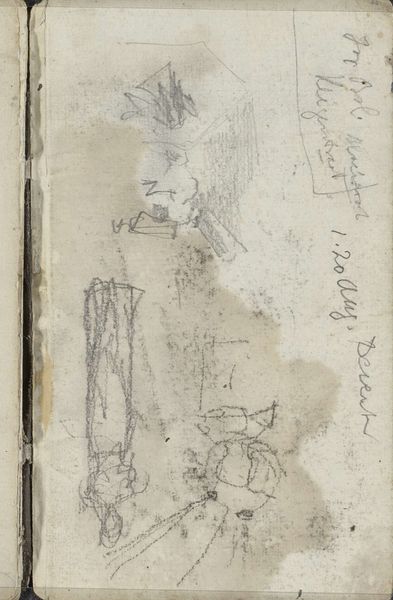
drawing, paper, pencil
#
portrait
#
drawing
#
sketch book
#
paper
#
coloured pencil
#
pencil
#
sketchbook drawing
#
genre-painting
Copyright: Rijks Museum: Open Domain
Here's a quick sketch by Louis Apol, likely done in the late 19th or early 20th century, using graphite on paper. The immediacy of this medium allows us to glimpse directly into the artist's process. The softness of graphite facilitates quick studies of light and shadow, a crucial aspect of Apol's approach. He uses simple marks to suggest figures gathered together, perhaps these 'matrozen' or sailors are sharing stories. The use of accessible materials like paper and graphite democratizes the artistic process. The sketch's value lies in its candid nature, showing the labor of observation and the initial stages of translating the world into art. It reminds us that every finished artwork begins with a series of choices, experiments, and a whole lot of focused work. Considering the sketch in relation to the artist's wider body of work encourages us to look beyond conventional notions of high art and embrace a broader understanding of creativity.
Comments
No comments
Be the first to comment and join the conversation on the ultimate creative platform.
